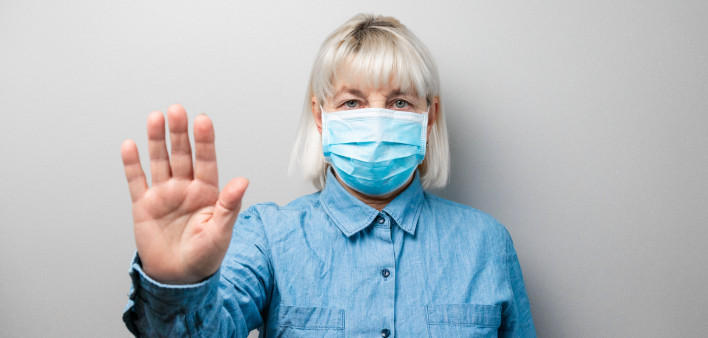Drawing on lessons from three decades of experience fighting the HIV pandemic, the United Nation’s AIDS organization published Addressing stigma and discrimination in the COVID-19 response: Applying the evidence of what works from HIV-related stigma and discrimination in six settings to the COVID-19 response. It’s a free 24-page document you can read online and download as PDF.
Guidance in the report covers six areas of life: community, workplace, education, health care, justice and emergency/humanitarian settings. The report divides each of these areas into different populations, ranging from individuals to interpersonal groups (such as coworkers and families) to organizational groups (schools, hospitals, employers and civil societies) to those in charge of public policy (health officials, governments, funding agencies, etc). Within each population subgroup, the authors offer recommendations for addressing stigma and discrimination.
Under Workplace Settings, for example, the report lists nine recommendations for employers to follow. Here are a few:
- Ensure workers and their representatives are consulted, informed and trained on occupational safety and health and workplace systems are strengthened to address COVID-19 issues.
- Where necessary, provide adequate protective clothing and protective equipment at no cost to workers.
- Partner with workers who have recovered from COVID-19 to speak to staff and contribute toward the reduction of stigma and discrimination (e.g., writing blogs or sharing a brief video about their experiences with COVID-19).
- Build on existing HIV workplace program structures, such as workplace policies, trained peer educators, HIV health committees and HIV education programs and expand them to include content on COVID-19.
- Provide all employees with accurate, up-to-date, relevant, evidence-informed information on COVID-19 and comorbidities and legal literacy to reduce fear and encourage uptake of preventive measures and timely engagement with the health-care system if symptomatic.
- Pay particular attention to gender in policies related to working from home and taking personal and sick leave, recognizing that women disproportionately bear the burden of caregiving for children unable to attend day care or school and sick family members.
Similarly, in the Community Settings area, the report recommends that those responsible for public policy—for example, national governments and public health officials—follow this guidance:
- Fund advocacy groups led by networks of populations “being left behind” to ensure the protection of these populations in the context of COVID-19.
- Measure COVID-19–related stigma in the community using qualitative assessments (e.g., virtual focus group discussions with representatives of people diagnosed with or recovered from COVID-19 and the broader community) and quantitative data collection (e.g., brief, standardized online or text message surveys) to guide development and implementation of programs to reduce stigma and discrimination.
Since the start of the #COVID19 pandemic, numerous forms of stigma and discrimination have been reported. Drawing on 40...
Posted by UNAIDS on Thursday, October 8, 2020
Why is it important to reduce discrimination and stigma? In its introduction, the report explains:
“In the wake of the fear and uncertainty that emerge during a pandemic, stigma and discrimination quickly follow, exposing people to violence, harassment and isolation and hampering the delivery and uptake of essential health services and public health measures to control the pandemic.
“The stigma that arises during a pandemic can exacerbate existing inequalities, including those related to race, socioeconomic status, occupation, gender, immigration status and sexual orientation.
“The presence of stigma specific to certain health conditions has been observed in the HIV pandemic, the outbreaks of Ebola virus and Zika virus, and now the COVID-19 pandemic. The anticipation of stigma during a pandemic can interfere with the adoption of preventive measures, timely testing and adherence to treatment.”
In a press release about the report, Alexandra Volgina, program coordinator at the Global Network of People Living with HIV, said: “For the last 30 years, we have been successfully leading the HIV response, building valuable experience, knowledge and wisdom along the way. We want to share these to change people’s lives for the better and to make our distinctive contribution to overcoming the COVID-19 pandemic.”
The report is the latest in a series of documents from UNAIDS addressing COVID-19 from the lens of HIV history. For example, see articles about Rights in a Pandemic: Lockdowns, rights and lessons from HIV in the early response to COVID-19 and Rights in the Time of COVID-19: Lessons from HIV for an effective, community-level response.







2 Comments
2 Comments